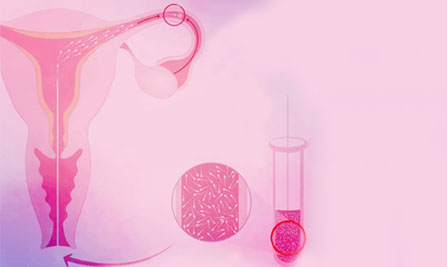IUI
INTRAUTERINE INSEMINATION
Intrauterine insemination (IUI) is a procedure in which sperm are “washed” and placed into the uterus through a catheter. The male partner produces a semen sample by masturbation. The sperm are then separated from the seminal plasma, white blood cells, prostaglandins, and other “debris” which are filtered out during natural intercourse. A speculum is inserted into the woman’s vagina and a catheter with an attached syringe, containing the washed sperm, is inserted through the cervix into the uterus. The specimen ("prepared semen") is injected and the catheter and the speculum are removed.
- Atleast one tube which is open / patent
- Ovulation by ultrasound scan
- Good sperm count / motility
- Good endometrial lining
It can cause some discomfort, mainly when the catheter is passed through the cervix. Some patients will describe it like a pap smear in terms of the level of discomfort.
Will I be successful with the IUI for the first time? A few cycles of IUI may be necessary before you are successful. Many fertility doctors recommend doing 2 inseminations back to back, to increase your chance of pregnancy.
How soon after IUI can I take a pregnancy test? Two weeks after the procedure.
IVF stands for in-vitro fertilization. IVF is a process by which sperms and eggs are fused outside the body and embryos are created which are then placed into the uterus.
Sperm can be collected either at home or hospital. (specimen should arrive at hospital / laboratory within an hour). We have a special room for husbands/partners.
Yes. Preparation takes approximately an hour. Insemination should occur shortly after the sperm has been prepared.
- Semen collection
- Semen analysis
- Semen preparation / wash
- Semen analysis after preparation
- Sample loading
- Performance of procedure IUI
- To capacitate the sperm and make it hyper motile
- To remove the seminal plasma from sperms which contains prostagladins
- Selection of motile sperms
- To remove lymphocytes, cytokines, infectious substances from the semen sample
- To reduce reactive oxygen species numbers
- To remove non motile sperms
- To process highly viscous sample
Approximately, natural IUI without medications has the success rate of 6‐10%, while IUI with fertility medications are about 20‐30% successful. Are there any risks associated with IUI? IUI is the least stressful fertility treatment on a woman’s body, especially if the patient is not taking fertility medications. It has a very few associated risks. However, cramping or spotting may occur during or after the procedure.
Usually the sample is collected through ejaculation into a sterile collection cup, but it is also possible to obtain collection condoms for this purpose. Most clinics want the semen to be delivered within a half hour of ejaculation, around the time of liquefaction, so if one lives close enough the sample can be collected at home. If not, one has to make do with a room at the clinic, a bathroom, or any private setting. There is a delay between when the semen sample is dropped off for washing and when it is inseminated. The amount of time depends on the washing technique used, which takes 30 minutes to two hours, as well as on the clinic’s scheduling. Most will perform the IUI as soon after washing is completed as possible.

